- Home
- Encyclopedia
- Moon Shadows Over Wyoming: The Solar Eclipses o...
Moon Shadows over Wyoming: The Solar Eclipses of 1878, 1889 and 1918
In the summer of 1878, William O. “Billy” Owen was working with a surveying crew high in the Medicine Bow Mountains, about 36 miles west of Laramie, Wyoming Territory. “Over that vast forest,” he later wrote, “the moon’s shadow was advancing with a speed and rush that almost took one’s breath.” This was the total solar eclipse of July 29, 1878.
“It was terrifying, appalling,” Owen’s account continues, “and yet possessed a majestic grandeur and fascination that only one who has seen it can appreciate.”
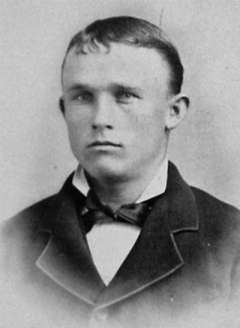
Worldwide, solar eclipses occur relatively often, at a rate of two to five per year. In a solar eclipse, the moon passes between the earth and the sun, sometimes blocking part of its light and at other times, all. A complete blockage is a total eclipse, and the zone of the earth traversed by the moon’s shadow is called the path of totality. The width, length and route of the path all differ from one eclipse to the next.
“Totality” is the brief period of darkness on Earth when the sun is completely obscured. Totality can last less than one minute or more than seven. During totality, astronomers have a unique opportunity to study the “night” sky around the sun. Because the light of the sun itself is blocked, they can also observe the corona—the sun’s outer atmosphere—otherwise invisible.
Besides the 1878 eclipse observed by Owen and his party, two other total solar eclipses since territorial times crossed present Wyoming before 2017—in 1889 and 1918. These were important opportunities for astronomers with enough personal or institutional means to travel to a choice location and to pay for shipping the necessary equipment. In two of the three eclipses, the totality paths crossed the line of the Union Pacific railroad in Wyoming, greatly simplifying all logistics.
The 1878 eclipse
The path of totality of the July 29, 1878, eclipse crossed most of Wyoming Territory in a swath from northwest to southeast. It was 191 kilometers wide—about 118 miles. Darkness on the centerline of the path lasted three minutes, 11 seconds.
Wyoming residents watched the eclipse through smoked glass, as did Owen and his companions. They also viewed part of the eclipse using their Burt’s solar compass, a large brass surveyor’s device with a mirror and other attachments that allow the user to find true north using the angle of the sun, instead of magnetism.
Such a simple setup was not sufficient for the professional astronomers who spent ten days or more in Wyoming Territory, however. They were there to gather data available only during totality and had to work fast and with the best possible tools.
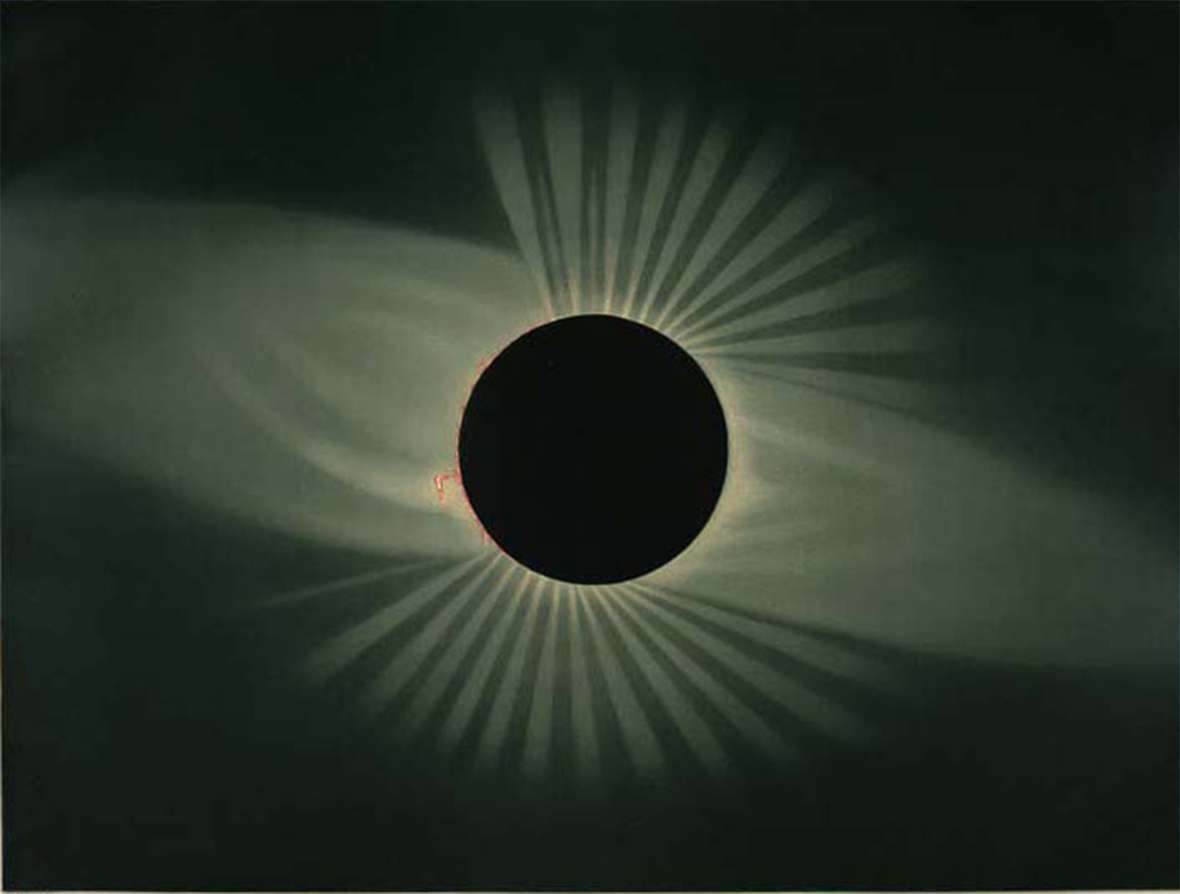
The inventor Thomas Edison traveled with a party that set up a temporary observatory near Rawlins, Wyo., attracting substantial local publicity. Edison was eager to test his new tasimeter, a highly sensitive heat-measuring device. The July 30, 1878, Laramie Daily Sentinel reported that seven experts, some with their wives as assistants, were working at the observatory. Henry Draper of New York, director of the Rawlins observatory, was the most eminent astronomer in the party.
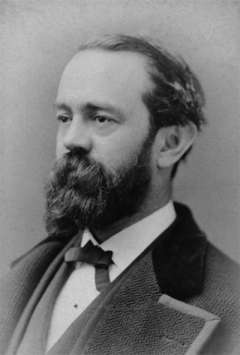
Draper was a pioneer, perhaps the first, in the young science of astrophotography. He planned to photograph the corona, and delegated other important observations to his colleagues. Draper reported their findings in the September 1878 American Journal of Science and Arts.
The scientists hauled nearly a ton of equipment, including at least four telescopes and accessories plus chemicals needed for the wet-plate collodion photographic process. The best system available at the time, it required the glass plate to be coated, exposed and developed, usually in a portable darkroom, all within about 15 minutes.
At Separation, a railroad station 14 miles west of Rawlins, the Canadian-American astronomer, Simon Newcomb, was in charge of a small party, one of two from the U.S. Naval Observatory in Washington, D.C. Newcomb was director of the Nautical Almanac, which provides astronomical data for celestial navigation and is still published by the U.S. Navy.
There was nowhere to sleep at Separation except in tents; the stationmaster’s wife cooked for the party. On July 24, Newcomb traveled to Rawlins to meet British astronomer J. Norman Lockyer, founding editor of the prestigious science journal, Nature. Lockyer had led eclipse expeditions to Sicily in 1870 and India in 1871, but this time was traveling alone and intended to assist Newcomb and the other American astronomers. After spending a night in the Separation depot, Lockyer returned to Rawlins to stay at the Railroad Hotel, quarters for the Draper expedition.
At Creston, the station 12 miles west of Separation, the second party from the U.S. Naval Observatory, led by William Harkness, enjoyed more conveniences than did Newcomb and his assistants.
Harkness, Otis F. Robinson, Alvan G. Clark and a few others slept in the railroad car that had delivered their equipment, and enjoyed the cooking services of soldiers sent from Fort Steele, where the railroad crossed the North Platte River, 41 miles to the east. The Harkness party’s temporary observatory had a canvas roof for quick removal before observations.
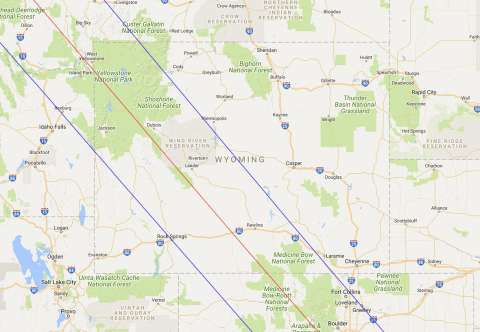
Harkness and his party spent the days leading up to the eclipse rehearsing, and testing equipment for the big event, down to the tiniest details. To establish their precise latitude, Harkness used a sextant and artificial horizon—a basin of mercury under glass. To find their longitude, Harkness received telegraph signals at the Creston station, helping him compare local time with the time at locations where longitude was already known, in Utah, Pennsylvania and Washington D.C.
At the observation point of an eclipse, knowledge of the exact latitude and longitude enabled astronomers to compare the predicted path of the moon’s orbit with its actual path, and therefore to make needed corrections.
Alvan Clark was a maker of fine scientific instruments. The company Alvan Clark and Sons had received a medal from the French Academy of Sciences for making huge telescope lenses, many of which had been installed in the best American telescopes, including some shipped to Wyoming for the eclipse.
At Creston, Alvan Clark was to photograph the corona. During the party’s many drills, Clark inserted a plate into his camera, exposed it, removed it and inserted a new plate. Otis Robinson tested a polariscope, which might offer clues to the nature of the corona—did it shine by its own light, or was it just reflected somehow from the sun? To study the chemical composition of the corona, Harkness practiced with his spectroscope, which, by isolating different parts of a star’s spectrum, made it possible to determine the different chemical elements in the star.
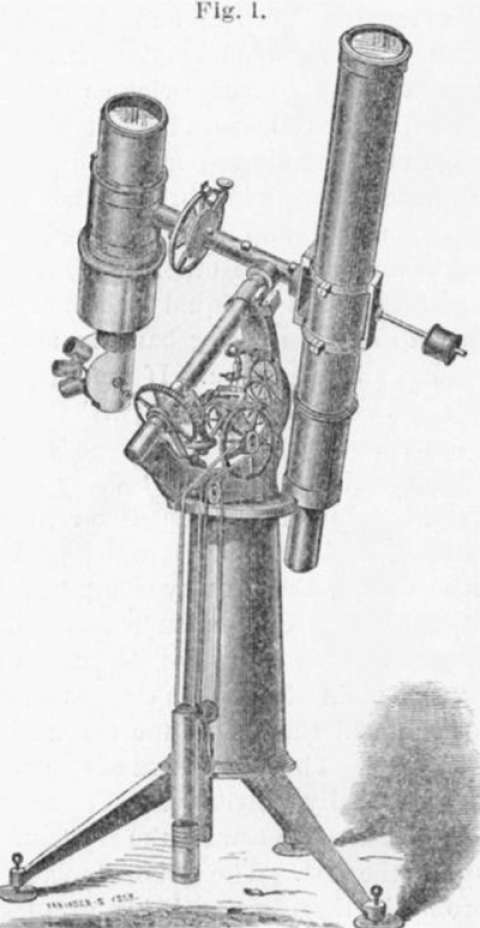
The men drilled from 7:30 a.m. until 10:00 p.m., with breaks for lunch, supper and an evening walk. All the expeditions performed similar drills, day after day, to perfect their routine so no time would be wasted during the brief totality.
Another American astronomer, James C. Watson from the University of Michigan at Ann Arbor, traveled with his wife and set up a Clark and Sons telescope near Rawlins. Like Lockyer, Watson and his wife stayed at the Railroad Hotel.
Watson had high hopes that during totality he would be able to see Vulcan, supposedly a new planet orbiting between the sun and Mercury. The existence of Vulcan had been proposed to account for a known disturbance in Mercury’s motions.
The Sentinel captured the excitement of the scene near Rawlins in the days leading up to the eclipse. The visiting astronomers, the Sentinel reported, were kind and courteous. They “furnished a rare opportunity to us frontier residents to enjoy some of the wonders of science … and they never tired of showing and explaining … the use of the instruments, and showing [curious citizens] the wonders of the heavens through their glasses.”
The visitors, too, appreciated the treatment they received. Draper later wrote, “Of the citizens of Rawlins it is only necessary to say that we never even put the lock on the door of the Observatory, and not a thing was disturbed or misplaced during our ten days of residence, though we had many visitors.”
Lockyer, Newcomb and others reported their findings in or were interviewed by The British Journal of Photography, Scientific American, The Washington Post, the Courier-Journal of Louisville, Ky., the New-York Tribune, the New-York Daily Tribune and the American Catholic Quarterly Review.
Lockyer reported that he was convinced that Watson had, in fact, seen Vulcan. It would be nearly 37 years before Albert Einstein’s general theory of relativity would account for this disturbance, and rule out the existence of Vulcan.
The weather was clear for all observers.
The 1889 eclipse
The path of the total eclipse of Jan. 1, 1889, crossed just a small piece of Wyoming—across the far northwest corner of Yellowstone Park. Totality on the centerline lasted two minutes, 17 seconds, and was 175 kilometers, or about 108 miles, wide.
Apparently, few astronomers visited Wyoming Territory for this eclipse, probably because transportation to Yellowstone was still difficult. Besides, there were plenty of other good locations in the country for viewing totality.
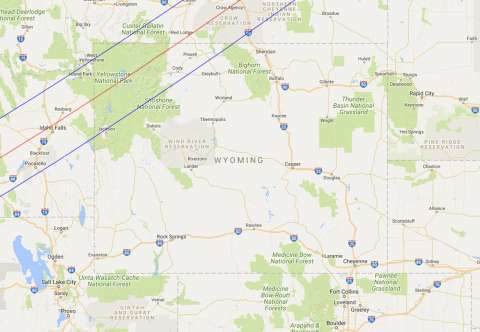
The Cheyenne Daily Leader reported on Jan. 6, 1889, “The eclipse was seven eighths total here. The sky was perfectly clear and darkness settled down as on a cloudy day. The air became decidedly cooler. Observations were taken by Prof. Garrard of Kentucky and Prof. John Harrington and Dr. Glover of the Thirty Society of this city.”
“Hundreds of Laramie people viewed the eclipse through smoked glass,” reported The Laramie Boomerang on Jan. 2, 1889. “During the [partial] obscuration Venus could be plainly seen.”
The 1918 eclipse
Totality for the June 8, 1918, eclipse lasted two minutes, 23 seconds, and the path was 112 kilometers (about 69 miles) wide, crossing the southeast corner of Wyoming, including Rock Springs and Green River.
At least six well-known astronomers visited Wyoming for this eclipse. The Green River Star reported on June 14, 1918, that the town “probably never again will … see so many great astronomers at any one time. Professors Frost, Hale, Barnard, Ellerman, Parkhurst, Anderson and many others have been located here for some time.”
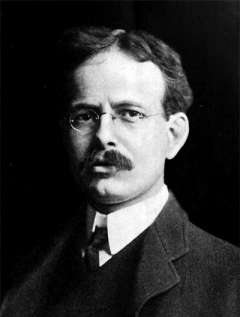
The Star goes on to describe the “wonderful clock-driven heliostat” owned by the Yerkes Observatory, of the University of Chicago. The heliostat—a mirror geared to a clock in order to continue reflecting the sun’s light at a single target as the sun moves through the day—threw the sun’s rays into a horizontal telescope and kept the light “steadily in one direction, without deviation for any length of time,” The Star reported.
Complete with “gigantic cameras and spectrographs,” the Yerkes telescope was set up near a local outcrop known as Teapot Rock—not to be confused with the better-known rock in central Wyoming that gave its name to the Teapot Dome oilfield.
The Yerkes party, a total of 16 observers, included Edwin Brant Frost, co-editor of the international Astrophysical Journal and professor of astrophysics at the Yerkes Observatory, as well as Edward Emerson Barnard, whom Isaac Asimov described in 1975 as “perhaps the keenest-eyed astronomer in history.”
The September 1918 Monthly Evening Sky Map published a photograph taken by Barnard of solar prominences, one of them more than 47,000 miles high. A solar prominence is an incandescent stream of protons, extending beyond the corona’s normal edge.
A party from the Mount Wilson Solar Observatory near Los Angeles, Calif., was led by George Ellery Hale. Hale was a graduate of the Massachusetts Institute of Technology and established the Astrophysical Journal in 1895. He had been associate professor of astrophysics at the University of Chicago and had obtained all the funding for the Yerkes Observatory. In 1904, Hale founded and also raised money for the Mount Wilson observatory, and became its director.
Like the Yerkes party, the Mount Wilson expedition set up its temporary base near Green River. In addition to hauling the 30-inch mirror from their prized Snow telescope—a permanent fixture at Mount Wilson—the scientists brought three cameras and three spectrographs. A spectrograph is a device for isolating a portion of a star’s spectrum, and recording this data with a camera.
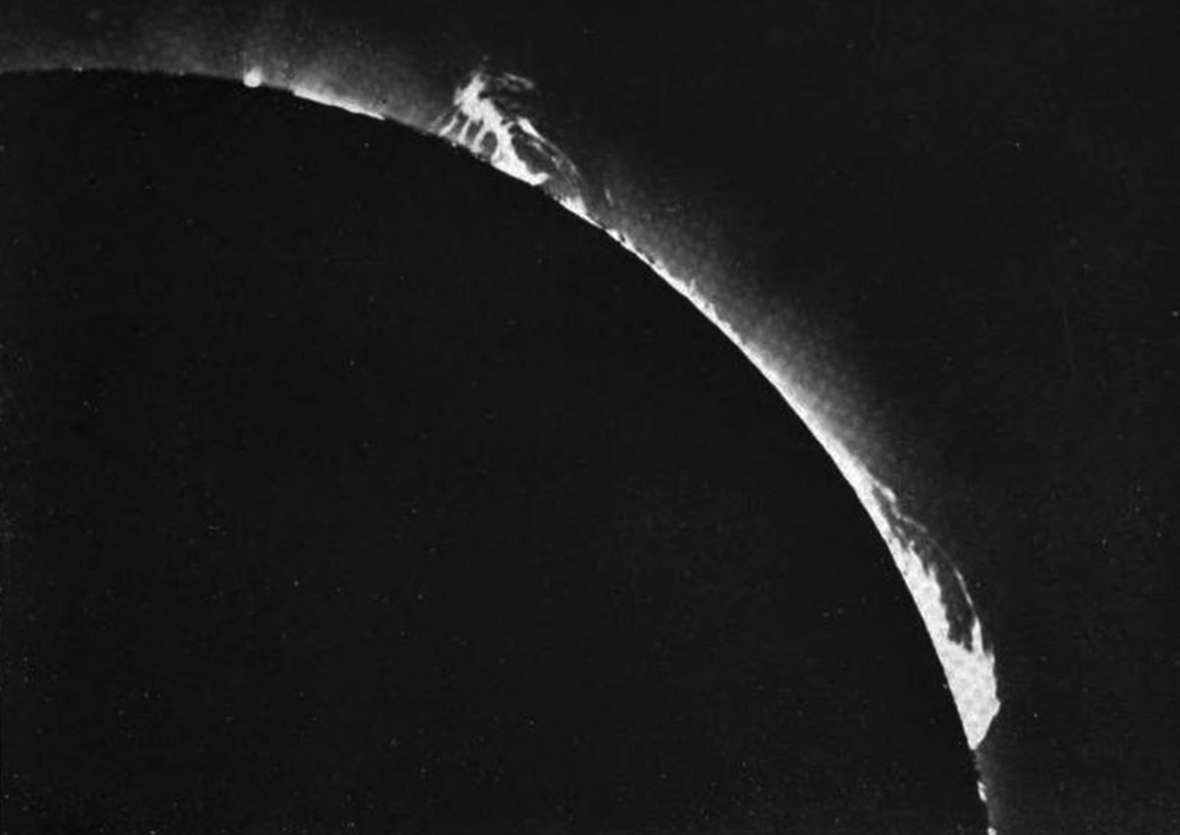
Clearer skies than in Illinois
Jacob Kunz and Joel Stebbins, a two-man expedition from the University of Illinois Observatory at Urbana, set up their equipment about two miles south of Rock Springs, Wyo. Their account of the expedition and its results, published in the December 1918 Popular Astronomy, is the most extensive and least technical of all the visiting astronomers’ reports.
To measure the brightness of the corona, Kunz and Stebbins hauled more than 400 pounds of equipment, including electric lamps, batteries and galvanometers. A galvanometer measures or detects a small electric current by movements of a coil or a magnetic needle. Kunz and Stebbins achieved their goal of comparing the corona with light sources of known strength, including a candle and an electric light bulb.
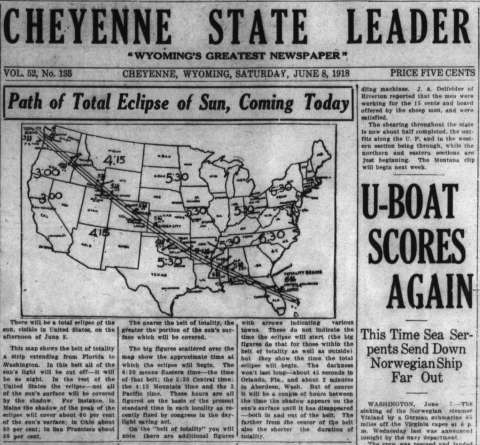
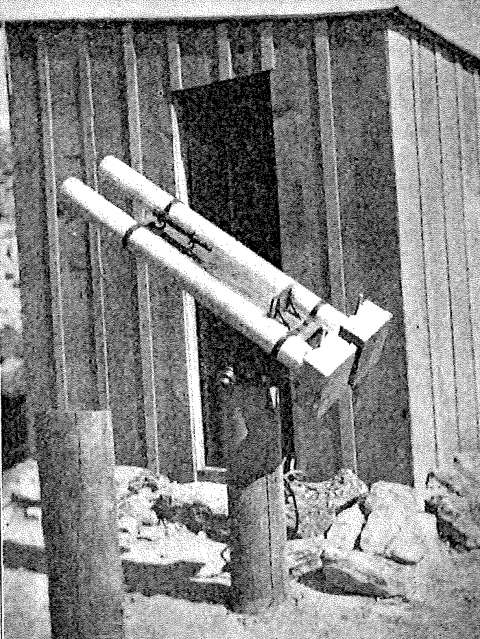
“Before leaving Urbana where smoke has been a nuisance for a dozen years,” Kunz and Stebbins reported, “we vowed that with several hundred miles of eclipse track to choose from we would make sure that this trouble at least would be left at home.” Except for two coal mines about a mile away, in Wyoming they were “as secluded as though we had been far from any town.”
A local contractor, Mr. Kellogg, built the shelter that was their temporary observatory, and Kunz and Stebbins also recruited two local assistants, “Messrs. Homer Coté and Paul Freeman, two mining surveyors.”
The performance of their equipment was superb. “Being far from traffic, the galvanometers were perfectly steady, and the dry air of Wyoming eliminated troubles with electrical insulation.” Their report continues, “Neither of us had ever seen anything like it before, and it remained for our cozy little hut in the desert to demonstrate what a model laboratory should be.”
They described in detail the partly cloudy sky, and the suspense they endured right up until two minutes before totality. They were the luckiest of the 1918 parties: At the critical time, thin clouds had covered the eclipse near the Green River observatories.
The June 8, 1918, Laramie Republican noted, “[O]ne may look at … [the eclipse] through a pinhole in a piece of paper or through a dark glass … easily smoked by a candle or oil lamp.” The Republican cautioned, “One must be very careful to have the glass so dark that the sun does not dazzle the eye at all.”
Kunz and Stebbins noted in their Popular Astronomy article that although Stebbins had witnessed two other total eclipses, he “was quite unprepared for the weird effect of the ashy light on the desert landscape shortly before totality, and for the spectrum colors in the clouds about the sun as they were breaking at the last minute.”
As in 1878, visitors were pleased to find the inhabitants so friendly. “We received uniform courtesy and aid from the people of Rock Springs,” wrote Kunz and Stebbins, “and in particular enjoyed the hospitality of the mayor, Dr. E. S. Lauzer.”
Except for the wind, which can disturb the precision of astronomical instruments, Wyoming is an ideal place to observe a solar eclipse. High altitude, fair weather and clear air, far from polluting population centers yet near sources of food, shelter and building services, attracted experts to these early eclipses from the United States, Great Britain and Europe. In turn, their discoveries advanced the science of astronomy worldwide.
Resources
Primary Sources
- Anderson, J.A. “The Expedition of the Mount Wilson Observatory to the Solar Eclipse of June 8, 1918.” Proceedings of the American Philosophical Society, 58:4, 1919, 255-258. Accessed April 27, 2017, at http://www.jstor.org/stable/984401.
- Barker, George F. “On the Total Solar Eclipse of July 29th, 1878.” Proceedings of the American Philosophical Society, 18:102, July-December 1878, 103-114. Accessed May 23, 2017, at http://www.jstor.org/stable/982766.
- Barnard, E.E. “The Large Prominences on the Sun’s Western Limb at the Total Eclipse of the Sun, June 8, 1918.” The Monthly Evening Sky Map, XII: 41, September 1918. Accessed May 23, 2017, at https://books.google.com/books?id=pmxCAQAAMAAJ&pg=PT130&lpg=PT130&dq=parkhurst+wyoming+eclipse+1918&source=bl&ots=OjY_f6CeA9&sig=FxVdO30uLmhm8Qnz2zsYmpbusD8&hl=en&sa=X&ved=0ahUKEwis2rvsysXTAhWrwlQKHRn0AygQ6AEINzAF#v=onepage&q=parkhurst%20wyoming%20eclipse%201918&f=false.
- Draper, Henry, M.D. “The Solar Eclipse of July 29th, 1878.” American Journal of Science and Arts, September 1878, 227-230. Accessed May 23, 2017, at http://www.biodiversitylibrary.org/item/113467#page/1/mode/1up.
- “The Eclipse.” New-York Tribune, July 31, 1878. ProQuest Historical Newspapers. Accessed Feb. 8, 2017, at www.proquest.com.
- “The Eclipse of the Sun, July 29, 1878.” Scientific American, XXIX: 7, Aug. 17, 1878, 96. Accessed Feb. 8, 2017, at https://archive.org/details/scientific-american-1878-08-17.
- Frost, Edwin B. “Results of Observations of the Eclipse by the Expedition from the Yerkes Observatory.” Proceedings of the American Philosophical Society, LVIII, 1919, 282-288. Accessed May 24, 2017, at http://scans.library.utoronto.ca/pdf/4/33/proceedingsofame58ameruoft/proceedingsofame58ameruoft.pdf.
- ———. “Total Solar Eclipse, June 8, 1918.” Popular Astronomy, Vol. 26, 458-461. Accessed May 24, 2017, at http://adsabs.harvard.edu/full/1918PA.....26..458F.
- Kunz, Jacob, and Joel Stebbins. “The Illinois Eclipse Expedition to Rock Springs, Wyoming.” Popular Astronomy, XXVI: 10, December 1918, 665-676. Accessed May 24, 2017, at https://books.google.com/books?id=o8EzAQAAIAAJ&pg=PA665&lpg=PA665&dq=parkhurst+wyoming+eclipse+1918&source=bl&ots=GrAQkGfR4b&sig=v6SbLnpnxPHEUWCnPYC4wPoo27g&hl=en&sa=X&ved=0ahUKEwis2rvsysXTAhWrwlQKHRn0AygQ6AEIMzAD#v=onepage&q=parkhurst%20wyoming%20eclipse%201918&f=false.
- Lockyer, J. Norman. “The Recent Eclipse.” The British Journal of Photography, Aug. 30, 1878, 412-414. ProQuest Historical Newspapers. Accessed Feb. 8, 2017, at www.proquest.com.
- “The New Planet: Professor Watson’s Report of His Observations During the Eclipse—Mr. Swift’s Observations.” Courier-Journal [Louisville, Ky.], Aug. 25, 1878. ProQuest Historical Newspapers. Accessed Feb. 8, 2017, at www.proquest.com.
- Owen, William O. Unpublished autobiography, c.a. 1930, 28. American Heritage Center, University of Wyoming, William O. Owen collection, #84, Box 1.
- “Professor Lockyer’s Idea. A Conversation with the Great English Scientist.” The Washington Post, Aug. 9, 1878. ProQuest Historical Newspapers. Accessed Feb. 8, 2017, at www.proquest.com.
- Rae, W. Fraser. “With the Astronomers.” New-York Daily Tribune, Aug. 13, 1878. ProQuest Historical Newspapers. Accessed Feb. 8, 2017, at www.proquest.com.
- “The Total Solar Eclipse of July 29th, 1878.” The American Catholic Quarterly Review, October 1878. Accessed Feb. 9, 2017, at https://archive.org/details/AmeriCatholicQRevV03.
- Wyoming Newspapers. Accessed Dec. 19, 2016, Dec. 20, 2016, May 17, 2017, at http://newspapers.wyo.gov:
- The Carbon County Journal, Jan. 5, 1889.
- The Cheyenne Daily Leader, July 27, 1878, July 31, 1878, Jan. 2, 1889, Jan. 6, 1889.
- The Cheyenne Daily Sun, July 29, 1878, Aug. 1, 1878.
- Cheyenne State Leader, June 8, 1918.
- Cheyenne Weekly Leader, Aug. 8, 1878.
- The Green River Star, June 7, 1918, June 14, 1918.
- The Laramie Boomerang, Dec. 31, 1888, Jan. 2, 1889.
- Laramie Daily Sentinel, July 30, 1878.
- The Laramie Republican, June 8, 1918.
- Laramie Weekly Sentinel, July 20, 1878.
- Riverton Chronicle, June 14, 1918.
- Rock Springs Miner, June 14, 1918.
- The Sheridan Enterprise, June 9, 1918.
- Wyoming State Tribune, June 10, 1918.
Secondary Sources
- Asimov, Isaac. Eyes on the Universe: A History of the Telescope. Boston: Houghton Mifflin Company, 1975, 91-94, 110-117, 122-159, 181-182.
- Baron, David. American Eclipse: A Nation's Epic Race to Catch the Shadow of the Moon and Win the Glory of the World. New York, NY: Liveright Publishing Corporation, a division of W. W. Norton and Company, 2017, 105-118, 133-149.
- “Five Millennium Catalog of Solar Eclipses -1999 to +3000 (2000 BCE to 3000 CE).” National Aeronautics and Space Administration (NASA). Accessed May 23, 2017, at
- https://eclipse.gsfc.nasa.gov/Secat5/Secatalog.html#cattab.
- “Five Millennium Catalog of Solar Eclipses 1801 to 1900 (1801 CE to 1900 CE).” NASA. Accessed May 23, 2017, at https://eclipse.gsfc.nasa.gov/SEcat5/SE1801-1900.html.
- "Five Millennium Catalog of Solar Eclipses 1901 to 2000 (1901 CE to 2000 CE)." Accessed May 23, 2017, at https://eclipse.gsfc.nasa.gov/Secat5/SE1901-2000.html.
- "George Ellery Hale." Accessed May 18, 2017, at https://www.lib.uchicago.edu/projects/centcat/fac/facch04_01.html.
- "Golden Era of Refractors." American Institute of Physics. Accessed May 24, 2017, at http://history.aip.org/history/exhibits/cosmology/tools/tools-refractors....
- “The Nautical Almanac.” Accessed June 12, 2017, at http://aa.usno.navy.mil/publications/docs/na.php.
- Rea, Tom. "A Kid in Hell on Wheels: Laramie as the Railroad Arrived." WyoHistory.org. Accessed May 23, 2017, at www.wyohistory.org/encyclopedia/kid-hell-wheels-laramie-railroad-arrived.
- Roberts, Phil. "Edison, the Electric Light and the Eclipse." Annals of Wyoming, 53:1, Spring 1981, 54-62. Accessed May 3, 2017, at https://archive.org/details/annalsofwyom53121981wyom.
- ———. "Edison, the Light Bulb and the Eclipse of 1878." WyoHistory.org. Accessed May 3, 2017, at www.wyohistory.org/encyclopedia/edison-light-bulb-and-eclipse-1878.
- Sheehan, William, and Richard Baum. "Vulcan Chasers." Astronomy, December 1997, 42-47. Accessed May 23, 2017, at http://burro.case.edu/Academics/USNA229/vulcan.pdf.
- “Simon Newcomb (1835-1909).” From a St. John’s University astronomy course, accessed June 27, 2017 at http://www.physics.csbsju.edu/astro/newcomb/SNewcomb.html.
- “Spectroscopy and the Birth of Astrophysics.” American Institute of Physics. Accessed May 24, 2017, at http://history.aip.org/history/exhibits/cosmology/tools/tools-spectroscopy.htm.
- Struve, Otto. "Biographical Memoir of Edwin Brant Frost." National Academy of Sciences of the United States of America: Biographical Memoirs, Vol. XIX, 25-51. Accessed May 18, 2017, at http://www.nasonline.org/publications/biographical-memoirs/memoir-pdfs/frost-edwin.pdf.
- "Total Solar Eclipse of 1878 July 29". NASA. Accessed May 23, 2017, at https://eclipse.gsfc.nasa.gov/Sesearch/Sesearchmap.php?Ecl=18780729.
- "Total Solar Eclipse of 1889 January 01." NASA. Accessed May 23, 2017, at https://eclipse.gsfc.nasa.gov/Sesearch/Sesearchmap.php?Ecl=18890101.
- "Total Solar Eclipse of 1918 June 08." NASA. Accessed May 23, 2017, at https://eclipse.gsfc.nasa.gov/Sesearch/Sesearchmap.php?Ecl=19180608.
- “What does a spectroscope do?” Telescopes from the Ground Up, accessed June 27, 2017 at https://amazing-space.stsci.edu/resources/explorations/groundup/lesson/basics/g23/.
Illustrations
- The photo of Billy Owen is from the American Heritage Center. Used with permission and thanks.
- The color maps of the paths of the totality of the solar eclipses of 1878 and 1889 are from NASA. Used with thanks.
- Étienne Léopold Trouvelot’s image of the 1878 eclipse and the photos of Henry Draper and George Ellery Hale are from Wikipedia. Used with thanks.
- The image of Henry Draper’s phototelespectroscope is from his report in The Proceedings of the American Philosophical Society, Jul.-Dec. 1878, p. 105. Used with thanks.
- Edward Emerson Barnard’s 1918 photo of the sun's corona is from The Monthly Evening Sky Map, September 1918.
- The image of part of the front page of the June 18, 1918 Cheyenne State Leader is from the Wyoming Newspapers website; see http://newspapers.wyo.gov. Used with thanks.
- The image of Kunz and Stebbins’ 1918 temporary observatory is from their report in Popular Astronomy, December 1918.
